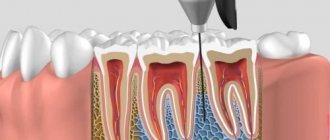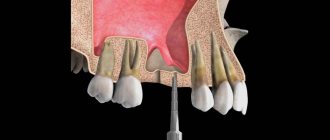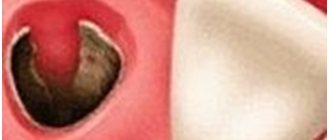What can and cannot be done after tooth extraction
- What to do after tooth extraction
- What to do after wisdom tooth removal
- What not to do
- What do we have to do
- What to do after tooth root removal
- Baths after tooth extraction
- What to do after a child’s tooth extraction
- What to do after removing a tooth with a cyst
- Temperature rises after tooth extraction
Tooth extraction is a major dental operation.
The recovery period after such a procedure can take some time and last from three days to seven days. There are indications and contraindications for what measures the patient needs to take to ensure that the rehabilitation process goes as quickly and successfully as possible. If you strictly follow the dentist’s recommendations and the general rules of the postoperative period, you can significantly bring the moment of recovery closer and avoid unpleasant or even dangerous complications. Rules of conduct during recovery after a doctor has pulled out a tooth may differ depending on the severity of the operation performed, its type, the general health of the patient, his habits and age. However, there are general recommendations that are relevant for any postoperative situation.
What else can pain indicate?
Severe pain after removal may indicate the development of complications. Pulsating pain that radiates to the ears and submandibular lymph nodes is not normal. The most common causes of complicated postoperative pain are the following factors:
- Violation of treatment protocol. Unfortunately, mistakes do occur, especially in the removal of complex teeth. The techniques and approaches used in different clinics may differ from the standards. Errors include leaving fragments of materials or a splintered tooth root behind.
- Alveolitis. Occurs in the absence of a blood clot. The disease complicates natural healing and interferes with normal tissue regeneration. That is why doctors do not recommend touching the wound with your tongue or rinsing your mouth intensively.
- Dry hole. One of the common complications and the cause of long-term pain after tooth extraction. Despite the moisture of the mucous membranes, bone tissue is visible at the bottom of the wound opening. This problem is typical for smokers during periods of hormonal surges. The doctor seals the wound with a swab containing medication.
- Trigeminal neuritis. Long-term pain persists when a tooth in the mandibular row is removed if the trigeminal nerve is damaged during the manipulation. Damage may be accidental due to structural anomalies or multiple branching of nerve structures.
The likelihood of complications developing is low if the removal protocol, medical recommendations after extraction, and timely response to alarming manifestations are followed.
What to do after tooth extraction
After the dentist has completed all removal procedures, the patient must take the following measures:
- The tampon that the doctor placed on the hole must be removed no later than half an hour later. If the patient has poor blood clotting, you can keep the compression pad on for 60 minutes;
- To reduce the likelihood of swelling of the soft tissues of the mouth or face, it is advisable to apply something cold to the cheek. This treatment measure will be effective only in the first hours after surgery. A piece of ice or frozen meat wrapped in cloth should be applied to the cheek several times for 5 minutes;
- On the first day, to avoid inflammation, you can do antiseptic baths;
- It is necessary to gently, carefully, but carefully carry out all hygiene procedures in the oral cavity, not excluding the area where the tooth was pulled out.
Compliance with these rules after removal will promote rapid healing of the hole and prevent infection.
2. After what time can you eat and drink?
After removal, you can drink water. After two hours you can eat. The limiting condition is not to chew rough food on the side of the extracted tooth in the first few days. Hard food can damage the blood clot, which is located in the socket and is needed for wound healing. If the patient experiences an acute feeling of hunger, then no one forbids eating cool yogurt or kefir. In the first days of healing of the hole, it is better to completely avoid eating rough, hard, solid foods, so as not to make strong chewing movements, as well as spicy, salty foods, so as not to irritate the oral mucosa. It is also important to monitor the temperature of food and drinks; they should not be too hot.
What to do after wisdom tooth removal
The third molar is usually pulled out due to inflammation that appears around it. At the same time, pus and infectious agents are likely to get into the wound. Therefore, in the postoperative period, the patient must follow general recommendations, as well as be as attentive as possible to his feelings, and note the slightest changes in his condition.
As soon as the hole stops bleeding, you should immediately remove the compression tampon. Its presence in the wound provokes the proliferation of bacteria and increases the likelihood of the onset of an inflammatory process.
The patient should be prepared for the fact that his gums will hurt for 3-5 days after the procedure. You need to purchase recommended anesthetics and take them on schedule. If the pain syndrome has become stronger, swelling of the face and gums increases over the course of several days, the elevated temperature does not subside, and an unpleasant odor begins to come from the socket, you need to call the dentist.
What not to do
In order to avoid any complications after surgery to remove any tooth, you must follow the following rules:
- Do not eat or drink anything for 3 hours after surgery;
- It is not recommended to eat hot, spicy, hard and fine-grained foods, or drink hot drinks. The load when chewing food must be transferred to the healthy side of the jaw;
- For 3 days, limit physical activity and procedures that increase blood pressure or increase blood flow. Do not take hot baths. Bathhouse, sauna, solarium, visiting the beach are prohibited;
- Do not touch the hole with your tongue, finger, toothbrush, or toothpick;
- Do not rinse your mouth;
- Do not ignore the advice, recommendations and prescriptions of the dentist. Do not violate your medication schedule.
If the patient has any doubts about his condition or questions for the doctor, he should not put off calling the clinic “for later.”
General recommendations
The most important rule in such a sensitive issue will be timely assistance from a qualified specialist. Therefore, if your tooth suddenly starts to hurt badly, this is not a reason to just take a pill and forget about this unpleasant moment, this is a good reason to go to a dental clinic, where you will be given first aid.
With any removal, complex or ordinary, there are a number of rules that must be followed to speed up the healing of the wound, as well as avoid abscesses and other negative consequences.
- Removing the gauze compress. The doctor leaves cotton wool or gauze after tooth extraction. A maximum of one hour after arriving from the dentist, you must carefully remove the protective swab. If it has dried out and stuck to the gum, do not remove it until you soak the area with chlorhexidine, since careless movement can damage or even remove the clot hiding the wound.
- Pain relief. Any discomfort after tooth extraction is a normal process for which you need to be prepared. Ice or any cool item from the refrigerator will help relieve discomfort. The selected item is wrapped in a towel and applied to the sore cheek. In addition to relieving pain, this action will help reduce the chances of swelling. However, this action also has its limitations: ice can be applied several times, making sure to take a break of 5-7 minutes.
- Eating. In the first few hours after tooth extraction, be it a molar or a chewing tooth, you should not eat any food, even if you are very hungry. Over the next 24 hours, the temperature of the food should only be at room temperature. Food should not be too spicy or salty, this can cause additional irritation of the mucous membrane.
- Limit alcohol and smoking. On the first day after tooth extraction, you should refrain from drinking alcoholic beverages. Even a small dose of alcohol can cause blood vessels to dilate, which will ultimately lead to bleeding from the wound. Smoking is permissible, but again at least 2-3 hours after the operation.
- Applying and removing sutures. If sutures were placed at the dental clinic after tooth extraction, the patient is usually invited for a follow-up appointment in a week. In some cases, the sutures dissolve on their own within two weeks.
- Dental treatment. For those who are now closely involved in treating the entire oral cavity, a reasonable question arises: when can the procedures be continued? If the removal was not difficult, then it will be possible to resume meetings with your doctor after 7 days.
What do we have to do
After the removal procedure, you need to limit your activity for a while, adhere to a healthy lifestyle and diet.
It is better to take the so-called “sick leave” - spend time at home in a calm environment, closely monitoring your condition.
Smoking and drinking alcoholic beverages are prohibited; it is better to abstain from them.
The menu for the recovery period should consist of nutritious food that does not require thorough chewing. It is better to reduce the number of meals by increasing the calorie content of dishes.
It is imperative to carry out hygienic procedures, since ignoring them can trigger an inflammatory process in the socket of an extracted tooth.
Mouth rinsing is prohibited; it is better to replace it with medicinal baths.
You need to make sure that the postoperative sutures do not come apart; to do this, you should not open your mouth wide or strain your facial muscles.
What to do after tooth root removal
Root removal is often accompanied by circumstances that complicate the dentist’s work and can negatively affect the duration and course of the recovery period.
In order for rehabilitation to progress at a normal pace and tooth reconstruction to begin, the patient must follow the rules of the recovery period.
First of all, it is necessary to avoid the occurrence of inflammation in the area of the torn root. For this you will need:
- Observe the rules of personal hygiene;
- Do not overheat the head area;
- Do not rinse or touch the affected area with your tongue;
- Do medicinal baths, take painkillers, start taking antibiotics if the doctor gives such a recommendation.
You should try to protect the area of the torn root as much as possible, since any infectious process at the site of removal can lead to serious complications.
Genoss bone replacement materials
Genoss are bone substitutes of the highest quality, which have been successfully used in dentistry for a very long time.
When are Genoss osteoplastic materials used?
Genoss have proven themselves to be excellent in filling sockets at the site of an extracted tooth, dental implantation, bone ridge plastic surgery, filling cystic hilar cavities, in the case of post-osteotomy techniques, in restoring periodontal tissues, and filling cavities during sinus lifting.
Benefits of Genoss
- One hundred percent biocompatibility with tissues of the human body.
- High resorbability.
- Rapid tissue healing.
- Improvement of hemostasis.
- Easy to use.
Baths after tooth extraction
Since rinsing after the removal procedure is prohibited, it is necessary to make baths.
Doctors usually recommend making baths using soda and salt, medications or decoctions of various medicinal herbs. For these purposes, drugs such as Miramistin and an aqueous solution of Chlorhexidine are suitable.
The procedure is easy to carry out. You just need to put a small amount of bath liquid in your mouth, tilt your head so that the liquid moves to the area of the pulled out tooth, and freeze in this position for 30-60 seconds. There is no need to take any active action; the medicinal solution should simply gently wash the damaged gum tissue. After this, the liquid must be spat out.
Antiseptic or therapeutic baths are recommended to be done every 3 hours during the day, preferably after eating and cleansing the mouth.
After the patient has taken a bath, it is advisable not to eat any food or even drink for 1 hour.
What to do after a child’s tooth extraction
After removing a child’s baby or molar teeth, parents should closely monitor the baby’s condition and well-being.
It is necessary to ensure that the child follows the following rules:
- Do not rinse your mouth or spit, as this may cause the blood clot to be removed from the socket;
- Did not engage in vigorous physical exercise and did not overheat;
- Brush your teeth efficiently and responsibly, avoiding the injured area with a brush;
- Take the necessary medications in full and according to the schedule established by the doctor;
- Carefully and promptly made baths with antiseptic or medicinal products;
- He did not put any foreign objects in his mouth and did not touch the socket with his fingers or tongue.
The child’s body temperature, swelling of soft tissues and the child’s breath must be monitored. In case of complications, consult a doctor immediately.
About the medicine
The medicine that is placed in the hole can be applied to a piece of gauze, which is subsequently inserted into the hole. In this case, after a certain amount of time indicated by the doctor, it needs to be taken out. This can be done either independently or during your next visit to the dentist. If this is not done in time, the process of putrefaction may begin, which will greatly complicate the situation. It is also not recommended to take out the gauze ahead of time, since food particles can get into the hole and the tongue can touch it, which will interrupt the healing process and also cause complications.
There is another way to install the medicine - in a hemostatic sponge. It already contains a medicine that helps disinfect the socket cavity and helps stop bleeding. You cannot take this sponge out - it will dissolve on its own. Most often this happens within 1-2 days, but in some cases the sponge may remain in the hole for 5-6 days. There is no need to be afraid of this. As a last resort, you can consult a doctor who will examine the wound and determine whether healing is proceeding normally.
Often the medicine in the sponge is very bitter, and this causes severe discomfort to the person. Unfortunately, nothing can be done about this, since getting rid of the sponge ahead of time is strictly contraindicated. To eliminate bitterness, you can drink sweet tea or juice.
Remember ! No circumstances can influence the ability to remove the medicine from the hole ahead of time. After 3-4 days, the surface of the hole will heal, and you will no longer have to experience discomfort.
People often wonder what kind of medicine is used for these purposes. Sometimes the gauze that is placed in the hole is treated with iodine - this will both disinfect the wound and prevent bleeding. The hemostatic sponge is already treated with a special substance consisting of boric acid, collagen and nitrofural, which helps stop the bleeding and protect the hole from various influences. But most often dentists use Alvozhil.
No other means are used for inserting into the hole.
What to do after removing a tooth with a cyst
After the doctor removes a tooth with a cyst, you need to follow the general recommendations of the recovery period, but pay special attention to reducing the likelihood of infection of the wound.
In the initial period after the procedure, it is necessary to cool the sore side of the jaw by applying 3-4 cold compresses. Next, you need to ensure that the operated part of the face does not overheat. It is forbidden to make warming compresses, take hot baths, or sunbathe. For pain relief, you can take medications prescribed by your doctor.
It is necessary to avoid injuring the healing hole - the food is soft or liquid, not hot; brush your teeth as carefully as possible; Do not rinse your mouth. It is necessary to limit physical activity and monitor local and general temperature. If pain, high body temperature and swelling lasts more than 2 days, consult a doctor. If pus begins to discharge or there is an unpleasant odor coming from the hole, consult a doctor immediately.
Temperature rises after tooth extraction
A slight increase in general body temperature or local temperature in the area of the operation is considered normal. This is the body's natural reaction to dental surgery.
If the temperature stays within 37-38° C, there is no need to bring it down. If it rises above 38° C, you need to take antipyretic drugs. Avoid using aspirin as it may cause bleeding from the socket.
An increase in temperature over a long period (2 or more days in a row), accompanied by signs of inflammation - severe pain, swelling, swelling of soft tissues, an unpleasant odor from the wound, are direct indications for urgent medical attention.











